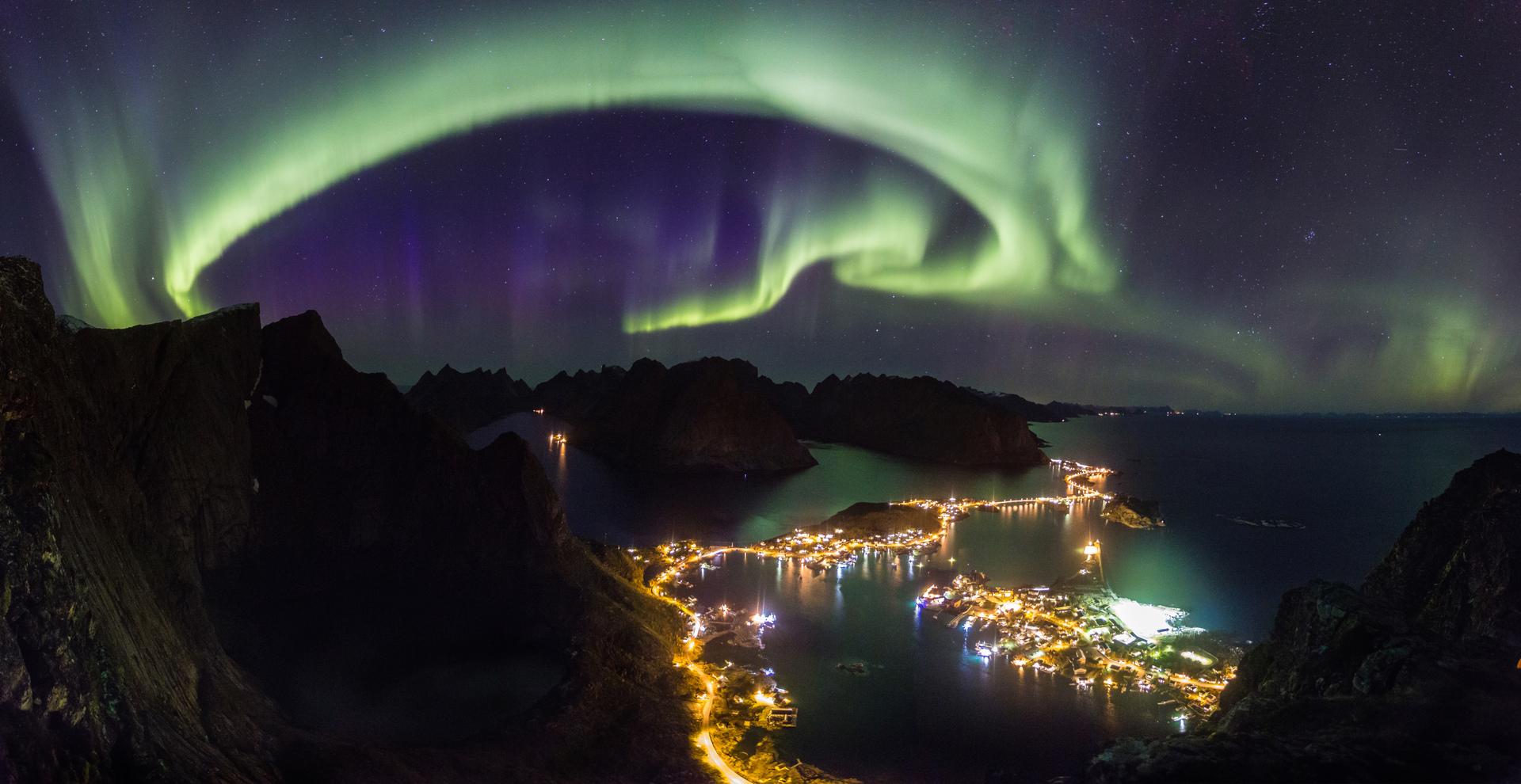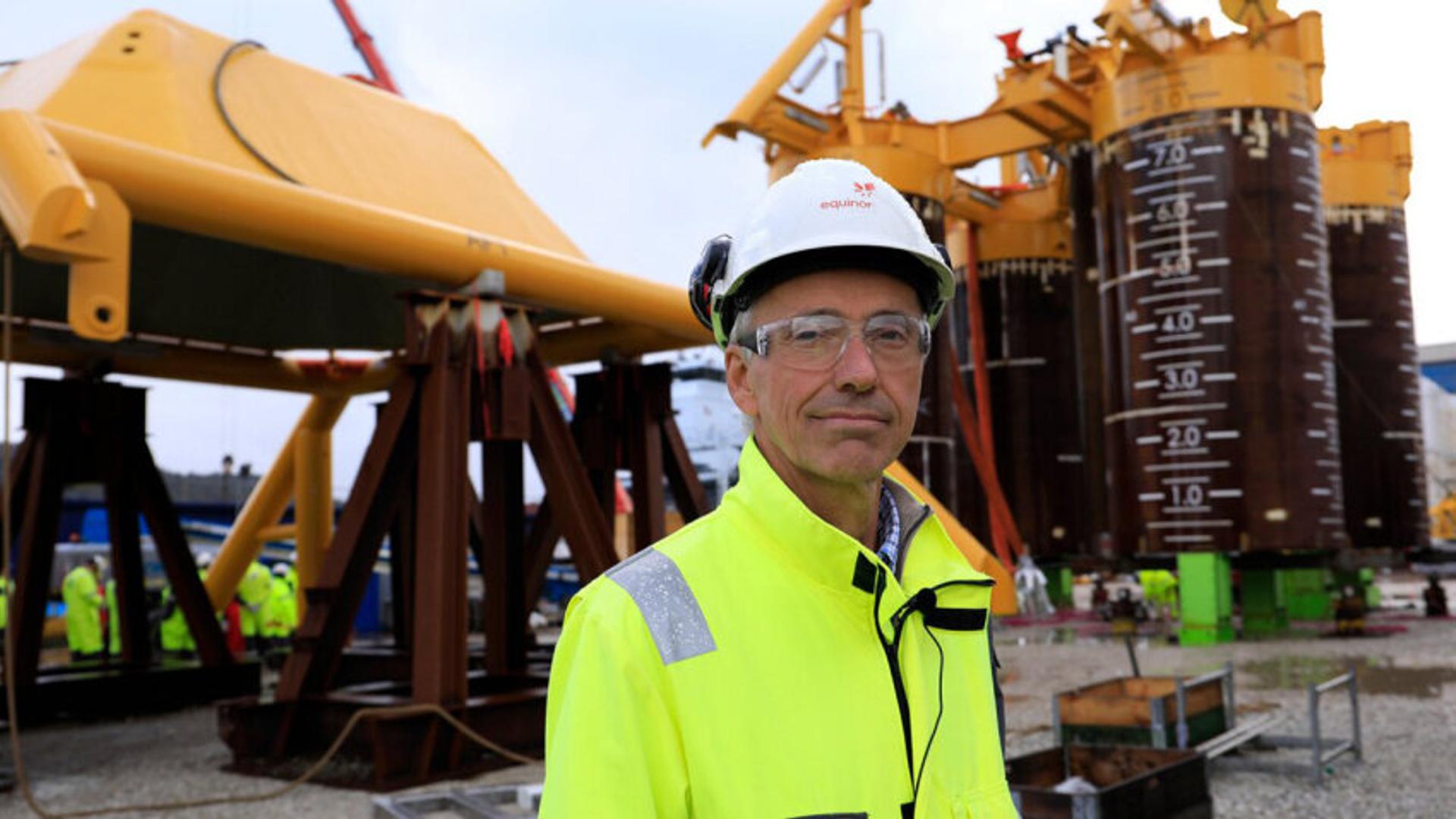

Northern Lights – the world’s first open-source CO₂ storage and transport service
Published 15 Mar 2023 (updated 29 Oct 2025) · 5 min read
Northern Lights provides infrastructure for transporting CO₂ from capture sources in Norway and Europe
to offshore storage locations below the seabed in the North Sea.
It’s the first CCS service that is open for everyone.
Carbon capture and storage (CCS) can soon become one of the world’s most important industries. But industrial emitters face a major challenge: what are they going to do with the CO₂ emissions they capture?
Northern Lights represents the solution. In May 2023, Northern Lights Joint Venture (JV) and the Danish company Ørsted announced the signing of a CO2 Transport and Services Agreement (TSA) to store 430 000 metric tons of biogenic CO2 emissions per year from two power plants in Denmark. The agreement represents a major milestone for Northern Lights JV and is an essential step in creating a commercial market for CCS in Europe.
A rapidly evolving market
“We are very pleased that Ørsted has selected Northern Lights as its CO2 transport and storage provider. Ørsted is our second commercial customer. Together with Yara, it gives us the opportunity to further utilise the capacity at our storage site below the North Sea. This agreement confirms the commercial potential for CCS and demonstrates that the market for transport and storage of CO2 is evolving rapidly,” says Børre Jacobsen, Managing Director at Northern Lights JV.
Northern Lights JV emerged from the Northern Lights project, a collaboration between Equinor, Shell and Total that is paving the way for a shared European infrastructure for CCS.
“In a nutshell, the Northern Lights project will provide a service for transporting and storing CO₂. It’s an entirely new business model,” says Project Director Sverre Overå.
“By providing an open and accessible network for the transport and storage of CO₂, Northern Lights will open the door for many more companies to implement carbon capture,” he explains.
“We are very pleased that Ørsted has selected Northern Lights as its CO2 transport and storage provider.”
Børre Jacobsen
Managing Director, Northern Lights JV

Building a scalable value chain for CO₂
This is the vision for Northern Lights: a network of tanker ships will transport liquefied CO₂ from intermediate storage facilities in Europe to a purpose-built receiving terminal at Øygården, near Bergen on Norway’s western coast. The emissions will then be treated, pumped through pipelines and injected into a rock formation 2 600 metres below the seabed for sequestration.
The project lets industrial emitters capture CO₂ emissions without worrying about where to store them. “The solution is flexible enough to receive CO₂ from capture sites all over Europe,” says Overå.
The project has passed the halfway mark in the construction process and has achieved several major milestones. In spring 2020, the drilling of a well in the North Sea roughly 100 kilometres from the Norwegian coast was completed. Dubbed “Eos”, the well will be used to inject CO₂ into the storage complex once Northern Lights goes into operation in 2024.
In spring 2023, a keel-laying ceremony was held at the Dalian Shipbuilding Industry Co. (DSIC) yard in Dalian, China, marking the formal start of construction of the first two LCO₂ tankers.
“We’re building this system step by step. The point is not to receive all of Europe’s emissions at Øygården immediately, but to create a value chain that grows as carbon capture becomes more widespread. We can add more ships, expand intermediate storage terminals and drill more wells as needed,” says Overå.
“In the first phase, we will use existing technology. However, scaling up operations and cutting costs will call for new solutions, innovation and technology development. These will enable us to accelerate development of this extremely important market,” he adds.
Collaboration with Microsoft
In order to realise the vision of a European CCS network, Northern Lights has signed letters of intent with a wide range of industrial and energy heavyweights, including Air Liquide, ArcelorMittal, Ervia, Fortum Oyj, HeidelbergCement, Preem, Stockholm Exergi, and ETH Zürich.
“We’re talking about building an entirely new ecosystem with industrial actors who are not used to working together. We have to create a market at the same time as we develop our business model,” says Overå.
Microsoft joined the project in October 2020.
“Our goal is not only to contribute our technology and knowhow, but to explore how new solutions like the Northern Lights project can help us meet our own carbon negative goals by 2030,” said Brad Smith, President and Chief Legal Officer of Microsoft, in a press release.
“We’re talking about building an entirely new ecosystem with industrial actors who are not used to working together.”
Sverre Overå
Project Director, Northern Lights
A complete CCS value chain in Norway
Since it will be technologically impossible or exorbitantly expensive to eliminate CO₂ emissions from certain sectors, such as waste incineration and cement and steel production, at least in the near future, CCS is considered essential to Europe achieving its climate targets. Although it is possible to reduce emissions, reaching net zero will require capturing and storing the remaining CO₂.
“Carbon capture is not an alternative to electrification and the transition to renewable energy sources, but rather a tool to remove emissions from sectors that are very difficult to decarbonise,” Overå points out.
The Norwegian government has long stressed the importance of CCS as a climate tool, both in Norway and internationally, and has been supporting technology development and pilot projects for years. In autumn 2020, the Norwegian parliament approved the construction of a full-scale, integrated CCS system, the Longship project, which encompasses the entire value chain from carbon capture to transport and storage and is the first of its kind in the world.
The longships are back at sea
The Northern Lights project is one component of Longship; the others are two full-scale carbon capture facilities. CCS Brevik is constructing a plant to capture 400 000 metric tons of CO2 from Heidelberg Materials’ cement factory in Brevik on the southeastern coast of Norway. Hafslund Oslo Celsius, meanwhile, plans to capture 400 000 metric tons of CO2 from the Klemetsrud waste-to-energy plant in Oslo.
The government has invested roughly USD 2 billion in Northern Lights – 80 per cent of the total budget for the first 10 years and has demonstrated its continued commitment with allocations in the 2023 national budget. As the market for carbon capture matures, the project will be able to generate revenue from transporting and storing CO₂.
“These are major investments. But we believe that this market will become profitable in time, with positive ripple effects for the environment and the Norwegian supplier industry. We must succeed if we are to achieve the goals of the Paris agreement,” concludes Overå.
